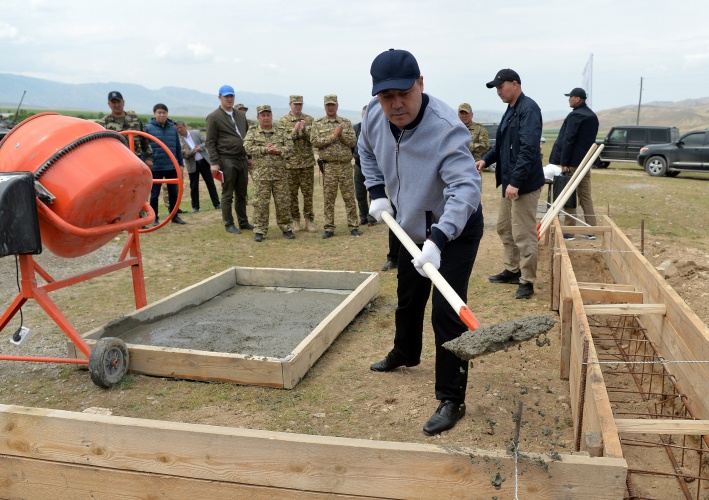Kyrgyz President Sadyr Japarov has ordered to modernize the Golovnoy water intake on the border with Tajikistan, in the area of which an armed conflict took place at the end of April, TASS reported on May 6 with reference to the press service of the Kyrgyz president.
The Kyrgyz leader reportedly announced his decision on April 6 during his visit to the Batken region, where the facility is located.
During his trip to the Batken region, Japarov visited the Buzhum training ground, where he spoke to the military, the Kyrgyz president’s press service said.
Japarov reportedly noted that “the state will fulfill all its social obligations to the armed forces.”
During visit to the Batken region, Kyrgyz president also laid a capsule for the construction of a cantonment in the Leilek district.
Recall, the clashes broke out along a disputed segment of the border between Tajikistan's Sughd province and Kyrgyzstan's southern Batken region in late April because of a dispute over a water distribution facility, which both countries claim as their own.
Villagers from opposing sides hurled rocks at each other on April 28 and border guards joined the fray with assault rifles, machine guns and mortars on April 29.
Tajikistan and Kyrgyzstan agreed a complete ceasefire on May 1 after the worst violence in decades along the Tajik-Kyrgyz border that killed 55 people. The sides signed the protocol on ceasefire and withdrawal of troops.
Kyrgyz authorities reported 36 people killed, all but three of them civilians, and 182 wounded.
Tajik authorities say 19 people were killed and 87 injured in the clashes.
The latest fighting was the heaviest in years and raised fears of a wider conflict between the two neighboring countries.
The border of Tajikistan and Kyrgyzstan has been the scene of unrest repeatedly since the collapse of the former Soviet Union.
Border talks between Tajikistan and Kyrgyzstan began in 2002. The countries share 976 kilometers of border – of which only 504 kilometers has reportedly been properly delineated, leading to tensions for the past 30 years.




